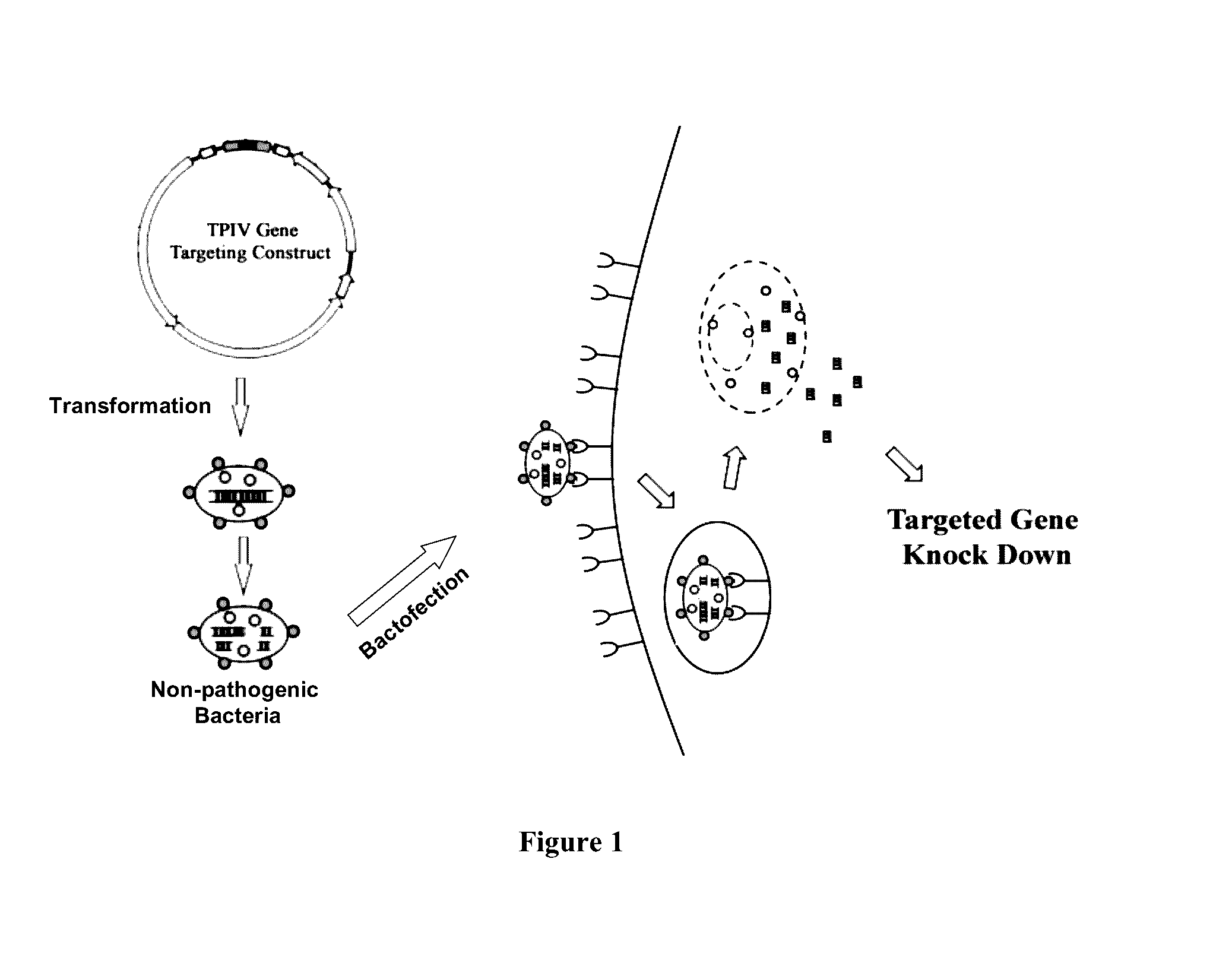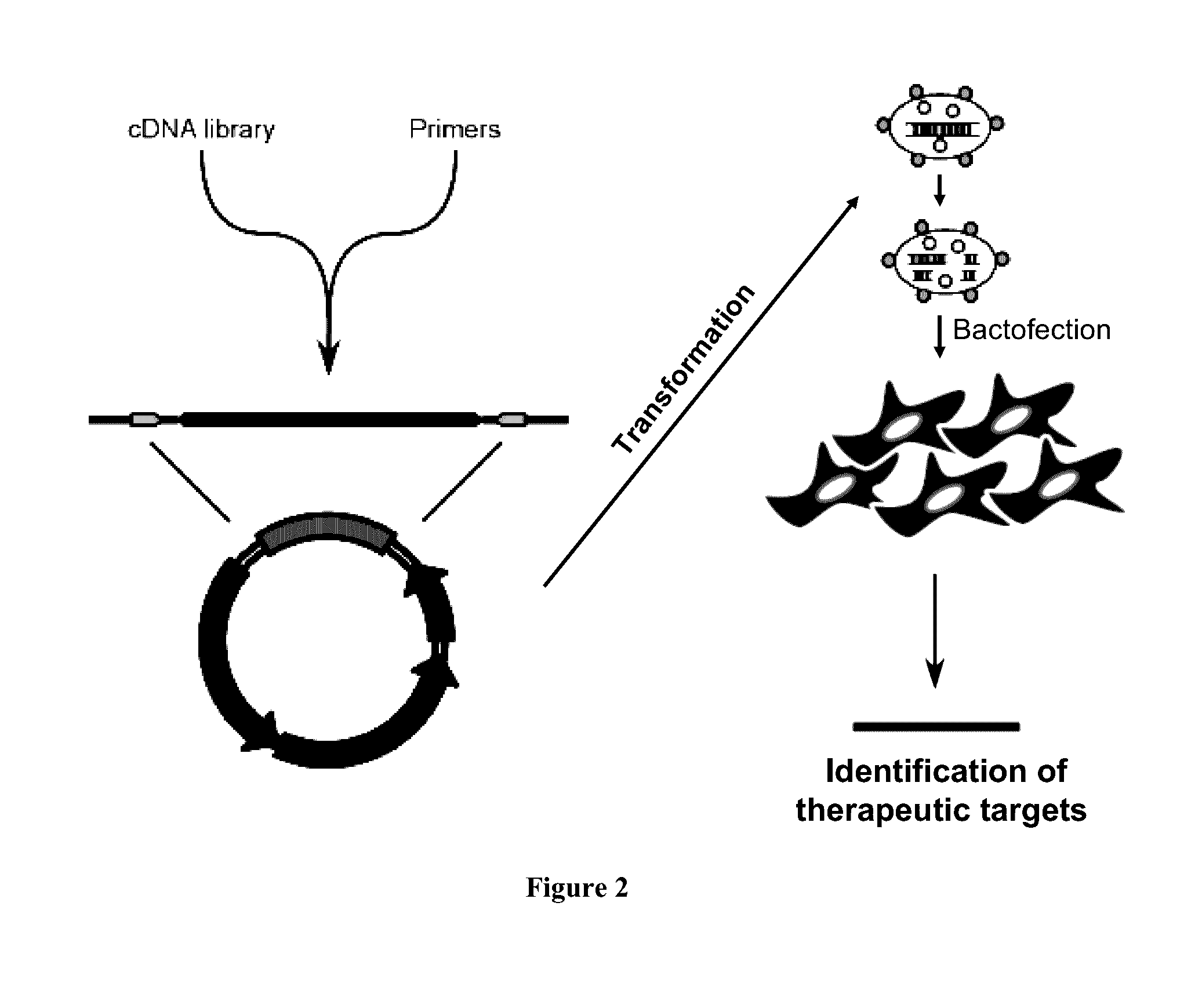Enabling the use of long dsRNA for gene targeting in mammalian and other selected animal cells
a technology of gene targeting and long dsrna, which is applied in the field of enabling the use of long dsrna for gene targeting in mammalian and other selected animal cells, can solve the problems of ineffective sirna and unachievable identification of efficacious sirna motif, and achieves the effect of simple and advanced gene targeting and difficult manipulation of genetically
- Summary
- Abstract
- Description
- Claims
- Application Information
AI Technical Summary
Benefits of technology
Problems solved by technology
Method used
Image
Examples
example 1
RNAi Against CSCP1 in Cancer Stem Cells (CSCs)
[0191]Selected from side population, SW480 human colon cancer Hoechst side population (SP) cancer stem cells were treated with E. coli cells, BL21 (DE3) pLysE, that carry the CSCP1-TPIV® plasmid described above. Control cancer stem cells were treated with bacteria carrying control TPIV® plasmid. Forty-eight hours after bacterial entry, cells were fixed and stained for CSCP1 / beta-catenin protein by standard immunofluorescent techniques. Control cells (FIG. 5, left panel) contained normal levels of CSCP1 / beta-catenin while CSCP1-targeting bacteria triggered specific loss of CSCP1 / beta-catenin through RNAi (right panel).
example 2
RNAi Against CSCP3 in Cancer Stem Cells (CSCs) Selected by Side Population
[0192]SW480 human colon cancer Hoechst side population (SP) cancer stem cells prepared as in Example 1, were treated with E. coli cells, BL21 (DE3) pLysE, that carry CSCP3-TPIV® plasmid. Twenty-four hours after bacterial entry, cells were fixed and stained for CSCP3 / STAT3 protein using standard immunofluorescent techniques. In FIG. 6, the top two panels show single-channel immunofluorescent images. Bottom two panels show intensity profile of CSCP3 with pixel intensity scale provided in the far right. Cells treated with bacteria targeting CSCP3 / STAT3 (right panels) show decreased levels of CSCP3 / STAT3, proving that RNAi was effectively carried out through the present bacteria-mediated system.
example 3
RNAi Against CSCP3 Caused Apoptosis in Cancer Stem Cells (CSCs)
[0193]The same cells as in Example 2 and similarly treated were fixed and stained with Annexin V-FITC 24 hours after bacterial entry in order to identify apoptotic (Annexin V positive) cells. As shown in FIG. 7, significant numbers of cells treated with CSCP3-TPIV® became apoptotic (right panel) while control cells remained healthy (left panel). This shows the therapeutic potential of using the present invention to treat cancer stem cells and cancer in general.
PUM
 Login to View More
Login to View More Abstract
Description
Claims
Application Information
 Login to View More
Login to View More - R&D
- Intellectual Property
- Life Sciences
- Materials
- Tech Scout
- Unparalleled Data Quality
- Higher Quality Content
- 60% Fewer Hallucinations
Browse by: Latest US Patents, China's latest patents, Technical Efficacy Thesaurus, Application Domain, Technology Topic, Popular Technical Reports.
© 2025 PatSnap. All rights reserved.Legal|Privacy policy|Modern Slavery Act Transparency Statement|Sitemap|About US| Contact US: help@patsnap.com



